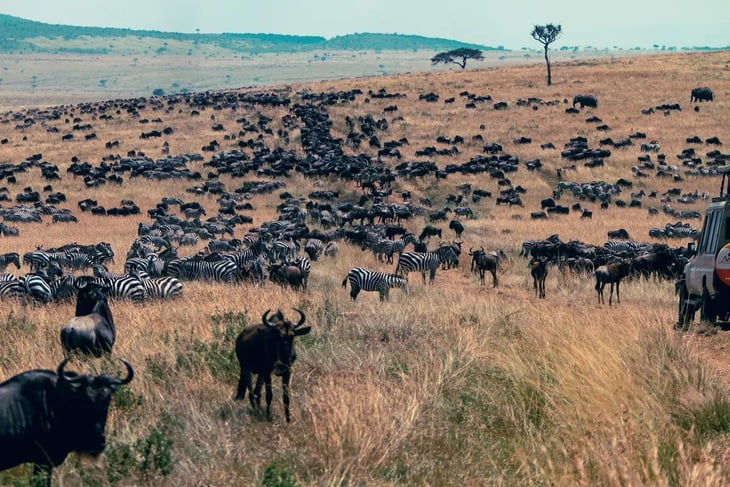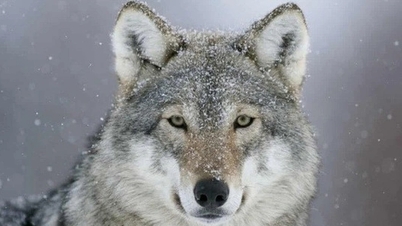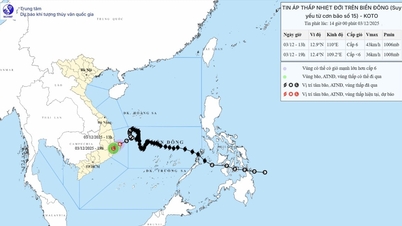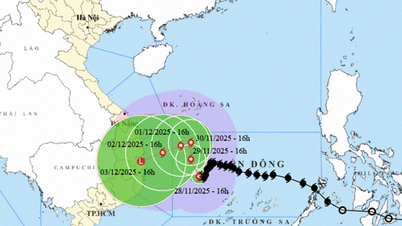
Humans are the 'champions' in terms of orbiting the Earth - Photo: STEVE LUXENBERG
From transcontinental flights to everyday walks, we are now making the planet "move" primarily with the weight of human bodies, rather than herds of animals or migratory birds as in the past.
Humans are now faster at walking than animals and birds.
According to a research team led by Lior Greenspoon, a doctoral student at the Weizmann Institute of Science (Israel), humans currently account for about one-third of the total biomass of mammal species, while livestock and domestic animals make up the majority of the remainder.
Wildlife, including whales, now accounts for only about 5% of the planet's biodiversity, a number so small that it shows nature is now just a "small fraction" of the planet's biological balance.
From data on the number, weight, and annual migration distance of each species, scientists have calculated a concept called "biomass movement." This is the total body mass multiplied by the distance traveled each year.
The results published in Nature Ecology & Evolution have astonished the scientific community. The massive migrations of millions of gazelles and zebras across the African savanna, in terms of total volume, are comparable only to large-scale human events such as the Hajj pilgrimage or the World Cup.
Other comparisons are also surprising. Approximately two million Arctic terns migrate almost directly from one pole to the other each year, yet their total migration volume is still smaller than that of gray wolves.
And all of that pales in comparison to the enormous volume of human movement, which amounts to 4 trillion tons x kilometers per year. Meanwhile, all terrestrial wildlife combined only amounts to about 100 billion tons x kilometers, which is 40 times smaller.
Humans' "foot movement," such as walking, commuting, and daily activities, alone is six times greater than the total movement of all other animals and birds combined.
And when you include cars, trains, and airplanes, no species on Earth can match humans in terms of mobility.

Airplanes contribute significantly to the human mobility index on Earth, according to statistics compiled by the research team - Photo: GRUNGE
Why is that?
This disparity partly reflects the mechanical power that humans have created. The authors state that a large power plant today can produce an amount of energy equivalent to all the energy that terrestrial wildlife uses for locomotion.
In the ocean, fish biomass is overwhelmingly dominant, moving approximately 30 trillion tons x kilometers per year—seven times the human population. However, the vast majority of this is made up of tiny species, while the migration of giant whales, despite covering thousands of kilometers, is equivalent to the total migration of the German population.
Plankton, despite being the largest biomass group on Earth, move very little, so their total movement is only about a quarter that of humans.
The picture used to be very different. In 1850, the world's population was only one-seventh of what it is today, and most people never left their birthplace in their entire lives.
At that time, wildlife biomass was double what it is today. But hunting, deforestation, and urbanization have caused a dramatic decline in populations of large mammals and migratory birds.
Scientists estimate that marine animal migrations have decreased by 70% since the 19th century, due to whaling, overfishing, and ship accidents.
This decline is not only a biological loss but also disrupts the natural nutrient cycle: whale feces are essentially "fertilizer" for the ocean, nourishing plankton and helping to absorb carbon from the atmosphere.
Since the Pleistocene ice age, the total biomass of wild animal species has decreased to just one-tenth of its original size.
Conversely, human and livestock biomass has skyrocketed, even though most livestock today are kept confined in industrial farms, with virtually no movement. "Nature has become a minor variable on a planet dominated by humans," the authors write.
Source: https://tuoitre.vn/con-nguoi-di-chuyen-nhieu-gap-40-lan-toan-bo-dong-vat-hoang-da-20251029191431825.htm



![[Live] 2025 Community Action Awards Gala](/_next/image?url=https%3A%2F%2Fvphoto.vietnam.vn%2Fthumb%2F1200x675%2Fvietnam%2Fresource%2FIMAGE%2F2025%2F12%2F16%2F1765899631650_ndo_tr_z7334013144784-9f9fe10a6d63584c85aff40f2957c250-jpg.webp&w=3840&q=75)
![[Image] Leaked images ahead of the 2025 Community Action Awards gala.](/_next/image?url=https%3A%2F%2Fvphoto.vietnam.vn%2Fthumb%2F1200x675%2Fvietnam%2Fresource%2FIMAGE%2F2025%2F12%2F16%2F1765882828720_ndo_br_thiet-ke-chua-co-ten-45-png.webp&w=3840&q=75)

![[Photo] Prime Minister Pham Minh Chinh receives Lao Minister of Education and Sports Thongsalith Mangnormek](/_next/image?url=https%3A%2F%2Fvphoto.vietnam.vn%2Fthumb%2F1200x675%2Fvietnam%2Fresource%2FIMAGE%2F2025%2F12%2F16%2F1765876834721_dsc-7519-jpg.webp&w=3840&q=75)
![[Photo] Prime Minister Pham Minh Chinh receives the Governor of Tochigi Province (Japan)](/_next/image?url=https%3A%2F%2Fvphoto.vietnam.vn%2Fthumb%2F1200x675%2Fvietnam%2Fresource%2FIMAGE%2F2025%2F12%2F16%2F1765892133176_dsc-8082-6425-jpg.webp&w=3840&q=75)
































































![[Photo] Prime Minister Pham Minh Chinh attends the Vietnam Economic Forum 2025](https://vphoto.vietnam.vn/thumb/402x226/vietnam/resource/IMAGE/2025/12/16/1765893035503_ndo_br_dsc-8043-jpg.webp)





































Comment (0)